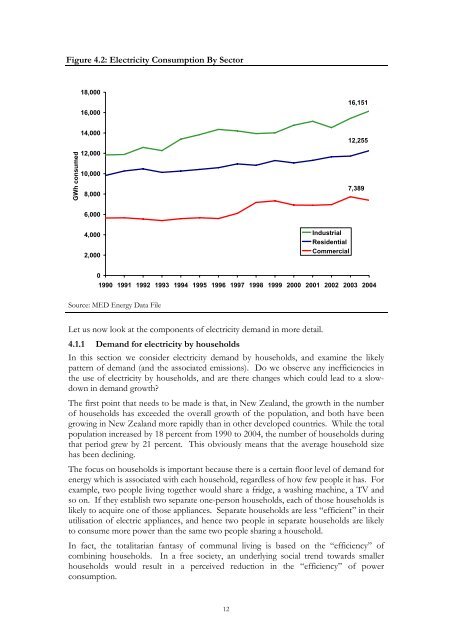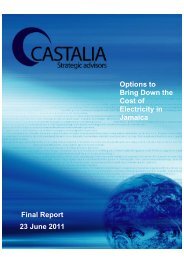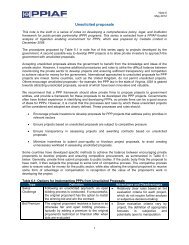Greenhouse Gas Emission Policies Is There a Way ... - Castalia
Greenhouse Gas Emission Policies Is There a Way ... - Castalia
Greenhouse Gas Emission Policies Is There a Way ... - Castalia
Create successful ePaper yourself
Turn your PDF publications into a flip-book with our unique Google optimized e-Paper software.
Figure 4.2: Electricity Consumption By Sector<br />
18,000<br />
16,000<br />
16,151<br />
GWh consumed<br />
14,000<br />
12,000<br />
10,000<br />
8,000<br />
12,255<br />
7,389<br />
6,000<br />
4,000<br />
2,000<br />
Industrial<br />
Residential<br />
Commercial<br />
0<br />
1990 1991 1992 1993 1994 1995 1996 1997 1998 1999 2000 2001 2002 2003 2004<br />
Source: MED Energy Data File<br />
Let us now look at the components of electricity demand in more detail.<br />
4.1.1 Demand for electricity by households<br />
In this section we consider electricity demand by households, and examine the likely<br />
pattern of demand (and the associated emissions). Do we observe any inefficiencies in<br />
the use of electricity by households, and are there changes which could lead to a slowdown<br />
in demand growth?<br />
The first point that needs to be made is that, in New Zealand, the growth in the number<br />
of households has exceeded the overall growth of the population, and both have been<br />
growing in New Zealand more rapidly than in other developed countries. While the total<br />
population increased by 18 percent from 1990 to 2004, the number of households during<br />
that period grew by 21 percent. This obviously means that the average household size<br />
has been declining.<br />
The focus on households is important because there is a certain floor level of demand for<br />
energy which is associated with each household, regardless of how few people it has. For<br />
example, two people living together would share a fridge, a washing machine, a TV and<br />
so on. If they establish two separate one-person households, each of those households is<br />
likely to acquire one of those appliances. Separate households are less “efficient” in their<br />
utilisation of electric appliances, and hence two people in separate households are likely<br />
to consume more power than the same two people sharing a household.<br />
In fact, the totalitarian fantasy of communal living is based on the “efficiency” of<br />
combining households. In a free society, an underlying social trend towards smaller<br />
households would result in a perceived reduction in the “efficiency” of power<br />
consumption.<br />
12










